On January 6, 2021, President Trump gave an incendiary speech to supporters, lamenting election fraud, urging them to march on the Capitol where Congress was certifying the victory of President Biden, and telling them to “fight like hell.” Critics of the president, including his own acting Secretary of Defense Chris Miller, blamed the remarks for the Capitol riot. Congress would then go on to impeach Trump a second time for inciting the violence.
Trump’s speech, however, is not a unique or even rare event, especially at a time of heavy polarization in the United States and other countries. Conservative websites and political leaders, especially at the state and local level, now regularly use violent rhetoric and demonize their political opponents. In addition, the high levels of polarization make it more likely that violent rhetoric will spread to both sides of the political debate. Already, violent rhetoric is growing on the political left.
It is often difficult to trace one leader’s statement to subsequent events, and even in the case of the Capitol insurrection the president’s defenders insist on his innocence. However, a range of research suggests the incendiary rhetoric of political leaders can make political violence more likely, gives violence direction, complicates the law enforcement response, and increases fear in vulnerable communities.
As extremism magnifies, the likelihood of violence increases
There is no direct line between violent rhetoric and political violence if the speakers are careful not to name specific targets and means, and otherwise incriminate themselves. The risk of violence is nevertheless considerable. Although any individual — even one who cites President Trump or another leader when committing violence — may have multiple motives for acting, some sense of the problem can be traced by studies that show correlations between increases in hostile political rhetoric and violence.
Part of the problem is that leaders’ remarks do not fade away after they are given. Incendiary rhetoric from political leaders against their political opponents, minority groups, and other targets is often quickly magnified. Leaders with large social media followings will see their remarks retweeted and otherwise shared with millions of followers. Leaders’ rhetoric then drives the coverage of more traditional news outlets, which broadcast it to their viewers and listeners. Rhetoric from national leaders also serves as a cue for local figures, particularly if the national leaders have loyal personal followings. The local leaders’ rhetoric in turn is amplified by social media and traditional outlets. Ordinary people play an important role too in spreading the message, sharing it with their own commentary with their friends and family.
Widely shared extreme rhetoric shifts the so-called “Overton Window,” signaling that an issue is now the subject of acceptable discourse when, in the past, discussing it might have been taboo. Prejudiced elite speech, one study found, is particularly powerful if other elites endorse it, emboldening audiences to declare their own prejudices and act on them accordingly. As one expert noted, referring to President Trump’s anti-Muslim and anti-Hispanic rhetoric: “The president’s rhetoric has helped to shift discourse norms in our country such that it is more acceptable among more people to denigrate and attack other groups of human beings.”
An academic study found that rhetoric did not change attitudes but rather emboldened individuals to express, and act on, pre-existing views they had once hidden. Anti-Muslim discourse prompted by remarks by candidate Trump grew on Facebook and other social media sites in 2016. This, in turn, led followers to increase their anti-Muslim tweets and to get more attention from cable news channels. In subsequent days, hate crimes against Muslims increased 32%, with a significant, but lesser, increase against the Hispanic community, another target of Trump’s rhetoric. Specific tweets would lead to increases in hate crimes, with the level rising and falling depending on the prevalence of the social media activity.
Hateful rhetoric can also stir dangerous emotions. A study of violence in Sweden found that hateful speech spurs negative emotions toward the target community among listeners, and another study of European audiences found that exposure to politicians’ violent rhetoric increases support for political violence among those surveyed. Such rhetoric also makes political violence against the target community seem more legitimate. In Germany, another study found that increases in anti-refugee sentiments on Facebook led to increases in violence against refugees: When Facebook had an outage, or when different events dominated the news, violence fell.
Incendiary rhetoric also creates a more dangerous political climate in general. An analysis of the manifesto issued by El Paso Walmart shooter Patrick Crusius, who killed 23 people, mostly of Hispanic heritage, found that he used words like “invasion” and “replacement,” drawing on conspiracy theories promoted by conservative media hosts. Another study found the politicians’ hate speech increases political polarization and that this, in turn, makes domestic terrorism more likely.
A spiral of reciprocal radicalization is a particular danger. Fringe groups in the targeted population can exploit hateful rhetoric directed against them, justifying their own violence and mobilizing additional support. The risk of reciprocal radicalization can be overstated, but even a low probability of it occurring is of concern, as it can worsen violence from both sides and empower even more demagogues.
Giving violence direction
Leaders lead. That truism highlights an obvious point when considering violent rhetoric: violence against whom? Political rhetoric not only highlights the problem but also the obstacles to solving it, often in the form of supposedly dangerous individuals and communities. Thus, if a leader targets them rhetorically, violence may increase sharply against communities that, in the past, had experienced relatively little violence.
Some individuals charged with terrorism-related crimes claim that the rhetoric of President Trump and right-wing news media convinced them of the danger of Muslims and other groups and led them to act. A 2020 news report found that 54 cases involving assaults and threats were linked to individuals who invoked Trump and his rhetoric during their actions. Of these, 41 cases involved pro-Trump violence, and 13 cases involved supposed defiance of Trump. A number of participants in the Capitol riots saw themselves as loyal soldiers for President Trump and claimed they were “awaiting direction” regarding how to act.
When President Trump tweeted out the phrase “Chinese virus” as COVID-19 began to spread in 2020, the use of the term exploded, according to a study in the American Journal of Public Health. Many of the tweets had virulent anti-Asian sentiments. Reporting from StopAAPIhate.org indicates that numerous hate incidents occurred after this tweet, with many falsely linking Asian-Americans to the virus.
Individuals as well as communities may be vulnerable. In 2019, President Trump blasted Representative Ilhan Omar (D-MN) in a tweet, claiming “she is out of control” and that she is anti-Semitic and anti-American. He also tweeted out a short video showing images from the 9/11 terrorist attacks alongside selected remarks of Rep. Omar. She claimed: “Since the president’s tweet Friday evening, I have experienced an increase in direct threat on my life—many directly referring or replying to the president’s video.” Michigan Governor Gretchen Whitmer, who was targeted by President Trump in several tweets, wrote that each time she is attacked, “my family and I see a surge in vicious attacks sent our way.”
Complicating the law enforcement response
In addition to increasing the threat, intelligence and police services face several problems when leaders use incendiary rhetoric. First, they must worry about offending their bosses or, at the very least, being out of step with their agendas. The Washington Post reports that law enforcement officials did not fully register the danger posed by demonstrators at the Capitol on January 6 because “the overwhelming majority of the participants at the rally were White conservatives fiercely loyal to Trump” and because law enforcement officials took great pains to ensure they were not being perceived as violating the protesters’ free speech rights.
Second, especially at the state and local level, political rhetoric can shape who is considered dangerous. Federal and state authorities often focused on Antifa, which represented at most a limited danger, diverting resources to it despite the presence of much more violent and active far-right groups.
It is vital for social media companies to be vigilant in stopping violent rhetoric and for law enforcement to anticipate, and quickly suppress, violence before it spreads.
Increasing fear
Given the increased likelihood of violence, the targeting of particular communities, and a possibly fitful law enforcement response, it is logical that communities may experience more fear. This fear can hold, however, even when actual levels of violence are low: The perception fueled by hateful rhetoric overcomes the reality. Polls of Americans show that over 75% believe that heated language makes political violence more likely. Concerns were particularly pronounced among Black, Hispanic, and Asian American and Pacific Islander communities.
There is a deceptively simple answer to the problem of incendiary rhetoric: Politicians should exercise restraint themselves and condemn their fellow leaders when they cross the line that separates inspiring their followers from encouraging violence. Unfortunately, this advice is unlikely to be heeded. President Trump succeeded politically in part because he broke political taboos and a host of would-be successors are eager to capitalize on the energy of his base. For now, it is vital for social media companies to be vigilant in stopping violent rhetoric and for law enforcement to anticipate, and quickly suppress, violence before it spreads. Such measures are short-term ones, however, and do not solve the deeper problem.
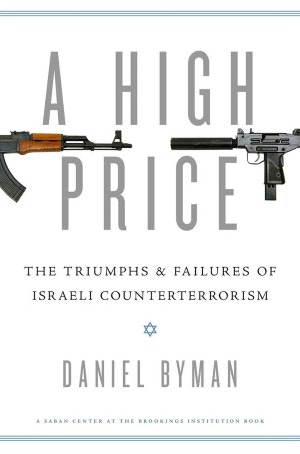
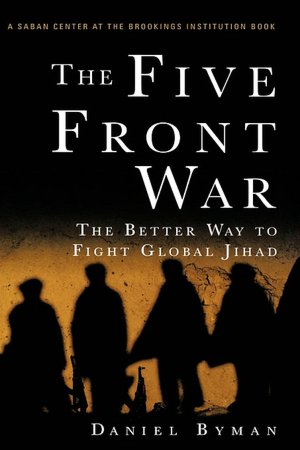
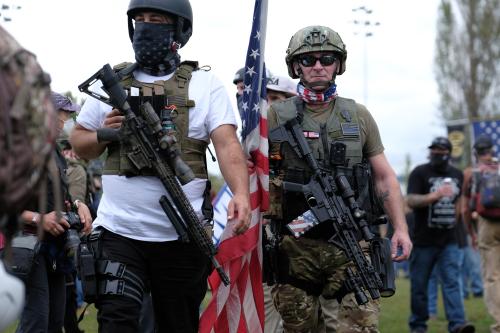
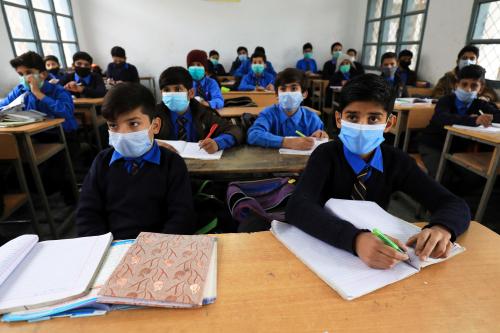
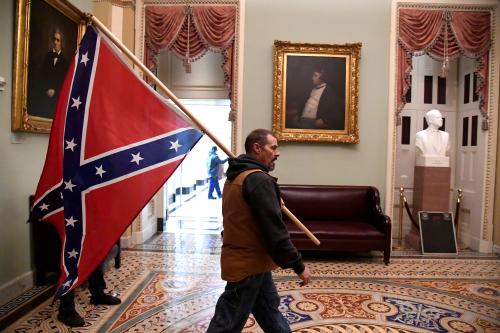

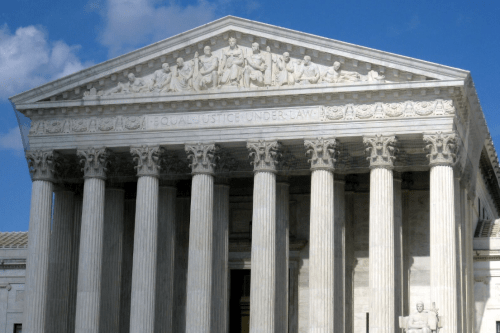

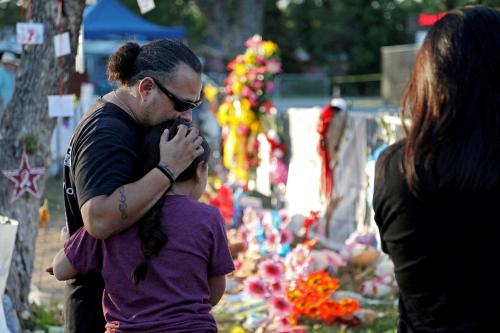
Commentary
How hateful rhetoric connects to real-world violence
April 9, 2021